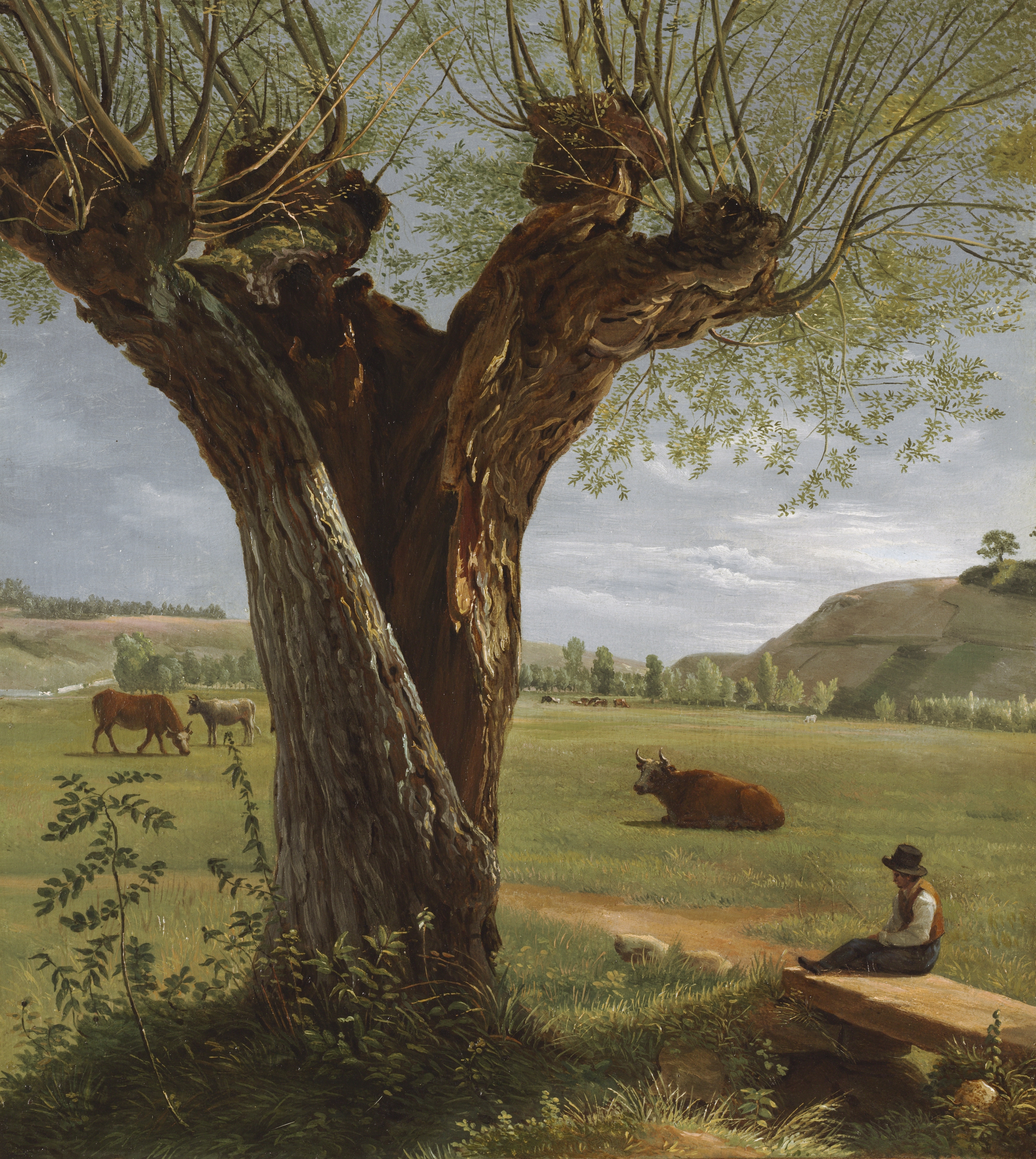The Cleveland Museum of Art
Collection Online as of April 25, 2024

Pollard Willow
after 1804
(French, 1751–1817)
Unframed: 29.6 x 26.8 cm (11 5/8 x 10 9/16 in.)
Bequest of Noah L. Butkin 1980.237
Location: 202 French Neoclassical Decorative Arts
Description
Little is known about Boquet's life, and his artistic origins remain obscure. His style and technique suggest that he received formal training, but where and with whom is unclear. An inscription on a painting attributed to Boquet implies that he spent time in Rome, where he would have seen works by 17th-century French artists such as Claude Lorrain. This may explain the gentle, bucolic atmosphere and the warm, golden light in Pollard Willow, characteristics of which recall the paintings of Lorrain and his contemporaries. The severe pruning or pollarding of trees, especially willows, was a common practice before the Industrial Revolution (about 1750–1850). The procedure allowed the tree to produce large numbers of shoots, which were used in basketry, fence construction, and as fodder for farm animals.- Georges Martin du Nord at Galerie B. G. Verte, Paris. Sold in 1977 to Noah L. Butkin, Cleveland. Bequeathed to the CMA in 1980.
- Argencourt, Louise d', and Roger Diederen. Catalogue of Paintings. Pt. 4. European Paintings of the 19th Century. Cleveland: Cleveland Museum of Art, 1974. Mentioned and reproduced: P. 61-63, Vol. I, no. 23
- Year in Review: 1980. The Cleveland Museum of Art (organizer) (June 24-July 19, 1981).
- {{cite web|title=Pollard Willow|url=false|author=Pierre Jean Boquet|year=after 1804|access-date=25 April 2024|publisher=Cleveland Museum of Art}}
Source URL:
https://www.clevelandart.org/art/1980.237